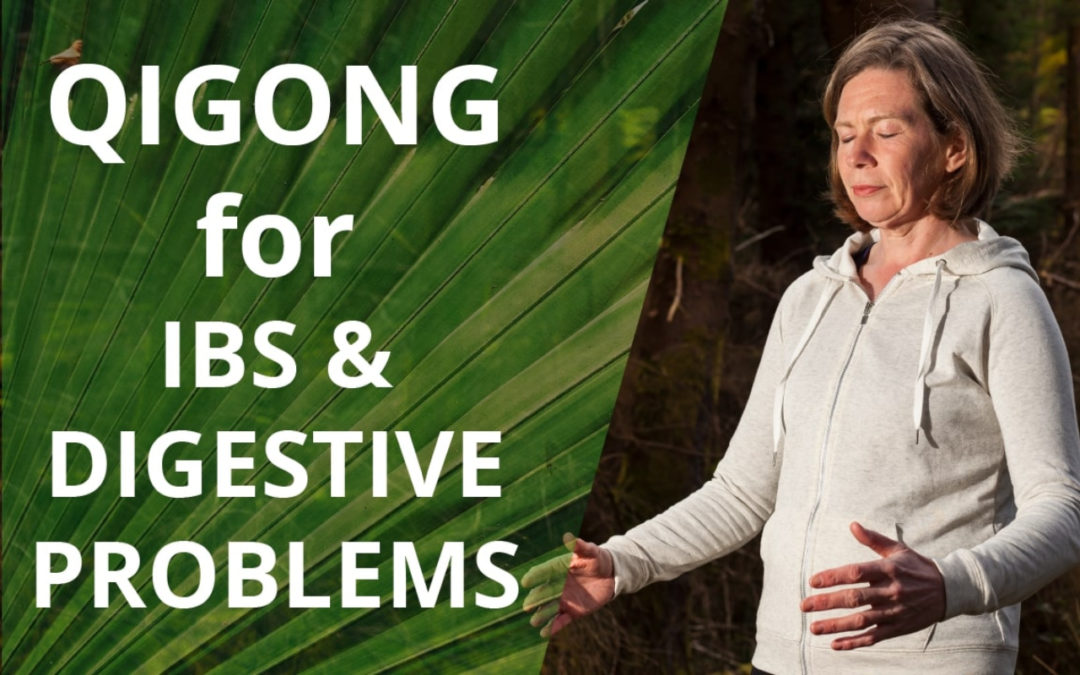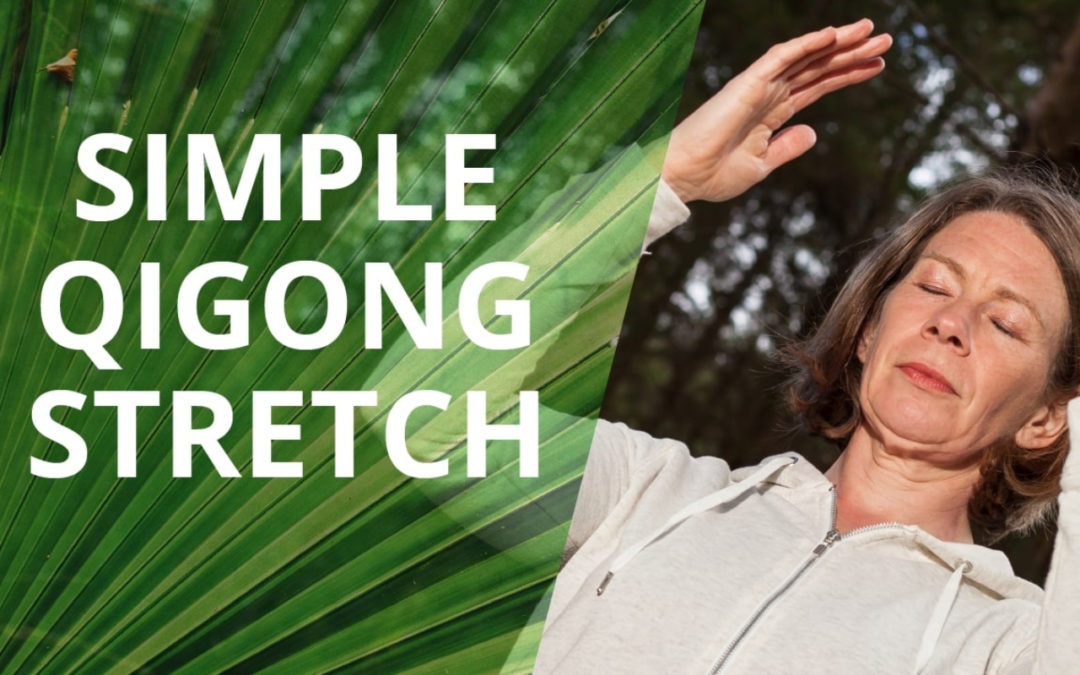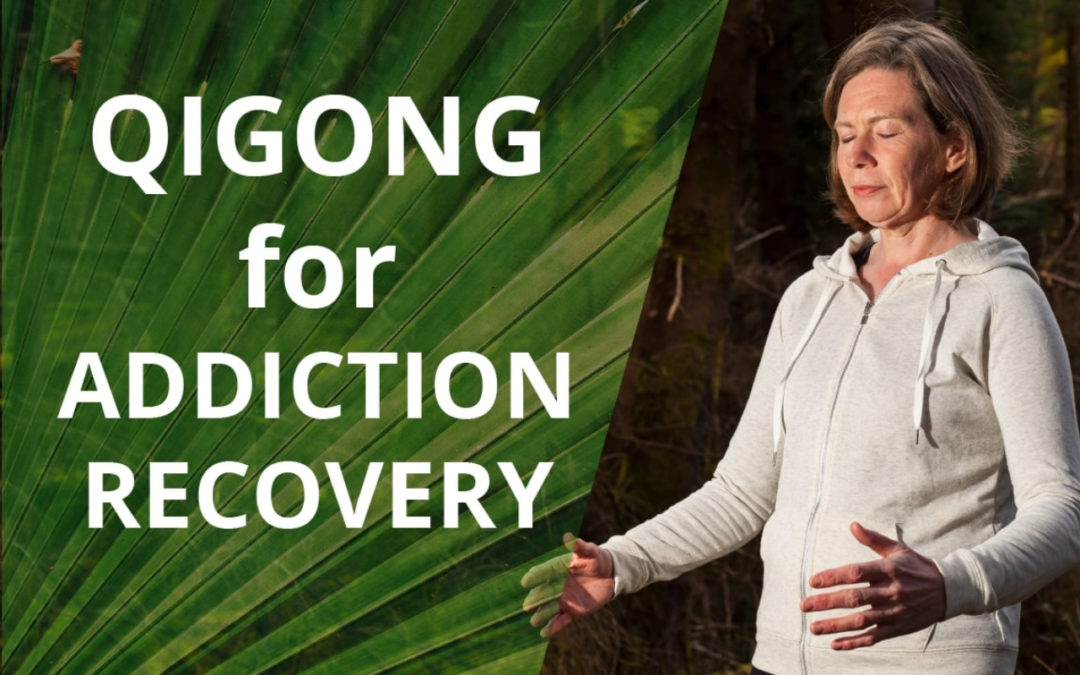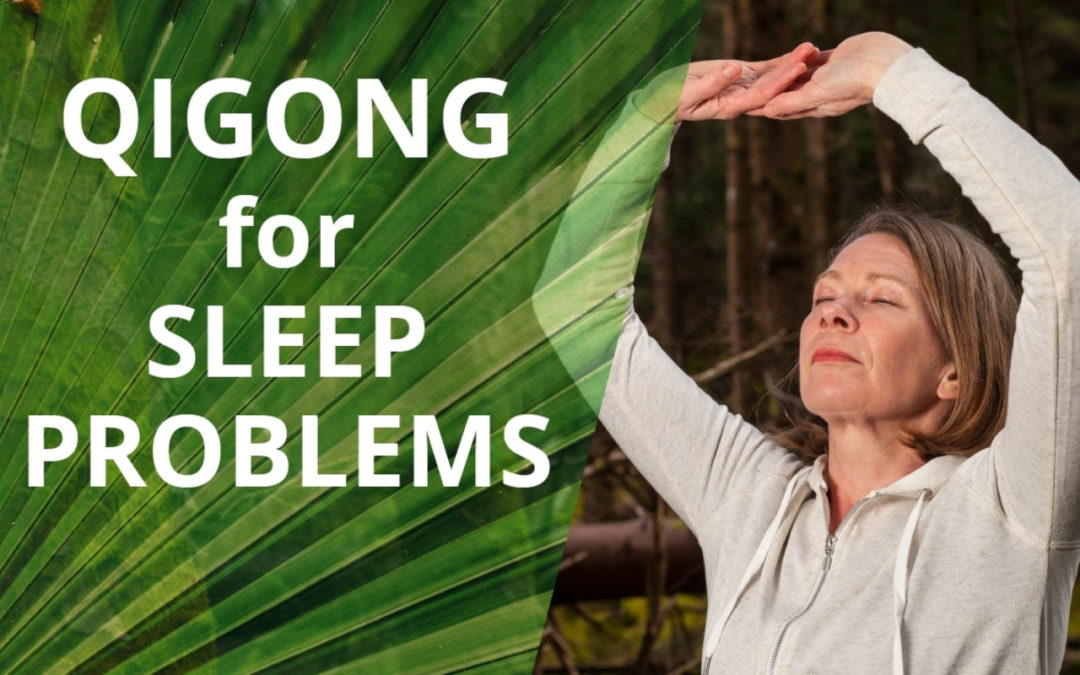
by janicetucker | 12 Jun 2018 | Qigong, Qigong & Emotional Issues, Qigong Routines, Qigong To Help Manage Specific Health Conditions
Gas, bloating, alternating constipation and diarrhoea, pain, mucus, an uncomfortably full feeling and abdominal cramping. Some of you will be familiar with these symptoms which can develop over time, with no structural or anatomical change that can be detected as cause. And for those of you who are familiar with them, this could mean a diagnosis of Irritable Bowel Syndrome or IBS. This is a distressing condition which nobody should have to endure. If you are someone suffering with this digestive problem then you’ll learn from the video on this page how to use Qigong for Irritable Bowel Syndrome.
Janice Tucker is a practitioner of Traditional Chinese Medicine and Medical Qigong. She is also the founder of the Space To Relax online programme of Qigong video lessons.
Don’t forget to head over to YouTube to subscribe to my YouTube channel. That way you won’t miss my regular videos which are full of useful health enhancing tips. These videos will help you to enhance your health and prevent illness from arising in the first place. Also please give this video a “Like” if you found it informative.
What Causes Irritable Bowel Syndrome (IBS)
1. Stress
In Traditional Chinese Medicine a “liver-spleen disharmony” due to stress is one of the most common causes of IBS. Normally, the liver is in charge of the free flow of energy (or Qi), blood and oxygen to the spleen and stomach. Stress, frustration, anger, moodiness and tightness in the body (the liver is sensitive to these emotions) can cause stagnation of the “free flow” of Qi through the digestive organs. This can cause acid, belching, nausea, abdominal distension and bloating. Diarrhoea, constipation and irregular bowel movements can also occur.
2. Food sensitivity
There are some foods which can trigger IBS symptoms. You may already have identified them but if not consider what you may be eating from the list of trigger foods below:
- Cold, raw vegetables: Eating too many cold, raw vegetables dampens the digestive fire and leads to malabsorption of nutrients.
- Cruciferous vegetables and legumes: They can cause gas and bloating in sensitive individuals.
- Dairy: Lactose intolerance can lead to digestive ailments.
3. Time and Manner of Eating
This is as important in Chinese Medicine as what you eat. Eating “on the run” or too quickly, while angry or hurried all impede healthy digestion. When you eat or drink quickly, you might also be inhaling too much air and eating too much.
The Solutions
1. Reduce Stress With Meditation and Qigong For Irritable Bowel Syndrome
Easing stress would be the most important aspect of your plan to treat the root cause of IBS, or any other digestive problem for that matter. Qigong for Irritable Bowel Syndrome management is ideal as it is very effective at relieving stress.
Research carried out at the University of North Carolina at Chapel Hill on meditation and IBS found that women who practiced mediation had around a 38 percent reduction in symptoms, according to U.S. News. Click here for the full article.
Meditation focuses on deep breathing and staying in the moment to relax the mind and body.
For an explanation of Qigong meditation go to a previous video I made – click here.
Practice simple Abdominal Breathing. Breathe in and out through the nose. As you breathe in the belly expands. As you breathe out the belly shrinks. For a full explanation and to watch a previous video click here.
2. Movement and Exercise
Massaging the abdomen (9x clockwise, 9x counter-clockwise) can be very helpful. Also, exercises to move things around such as moving Qigong exercises or Tai Chi can relieve stagnation of Qi and promote its free flow to the digestive organs.
3. Eliminate Trigger Foods From Your Diet (see the list above).
4. Eat In A Relaxed Environment Without Rushing
5. Other Treatments
The inclusion of probiotics to increase good bacteria in the stomach, herbal teas such as fennel and peppermint, acupuncture and Chinese herbal medicine can also be of great help in the management of IBS..
What Do I Do Next?
If you would like to learn even more Qigong for irritable bowel syndrome management then:
- Head over to my Space To Relax homepage where you can sign up for a free 3 part video series of Qigong lessons. These three lessons will show you just how easy it is to get started with Qigong. Once you’ve completed the free series you’ll have the opportunity to join my Space To Relax online membership programme of Qigong video lessons. This will allow you to take your practice to a whole new level where you will learn many exercises to eliminate health issues before they become a major problem. I’ll guide you step by step through many more effective Qigong methods which you can use to manage many digestive issues, including Qigong for irritable bowel syndrome management.
- Subscribe to my YouTube channel by clicking the red “Subscribe” button. That way you won’t miss my regular videos which are full of useful health enhancing tips. Also please give this video a “Like” and share with me in the comments box your best remedies for IBS.
- Join my free Facebook group, “Space To Relax Free Group” and leave any comments or questions for me there. I’ll be happy to answer them. Also, by joining this group, you will receive regular posts of Qigong articles and videos with really useful tips about how to use Qigong to improve your state of health.
home

by janicetucker | 29 May 2018 | Qigong, Qigong Routines
If you do any kind of sport then the video on this page is just for you! If you find that you easily pick up injuries when training or simply want to avoid getting injured then Qigong can be of enormous benefit to you. An injury for any athlete can seriously set back your training schedule causing disappointment and frustration. The Qigong stretch in the video on this page will help to loosen out the lower back, hamstrings and groin area. This makes it a perfect Qigong stretch for athletes who wish to avoid injuries to these areas of the body.
Janice Tucker is a practitioner of Traditional Chinese Medicine and Medical Qigong. She is also the founder of the Space To Relax online programme of Qigong video lessons.
Please go to my YouTube channel and click the red “Subscribe” button. That way you won’t miss my regular videos which are full of useful health enhancing tips. These videos will help you to enhance your health and prevent illness from arising in the first place. Also please give this video a “Like” if you found it informative.
Why Bother Stretching?
Anyone who performs any type of sport realises the importance of stretching to warm up the muscles beforehand. Performing Qigong stretching in a mindful way, using the combination of movement, breath and your mind is the quickest way to do this. As a result you will be able to get out there and do your stuff without becoming injured!
A Qigong Stretch For Athletes To Loosen Hamstrings, Lower Back and Groin
This exercise is part of a method called the “Yi Tai Zhi Qi” stretches, the whole of which is taught in my Space To Relax membership programme of Qigong video lessons. It is aimed at releasing turbid Qi from the joints of the body and is the perfect one to do first thing in the morning to set you up for the day feeling energised but relaxed at the same time.
Each movement can be performed in multiples of 3, 6 or 9. Start with multiples of 3 and gradually build up the repetitions as you become stronger and if you have more time. As you stretch breathe out and as you relax and come back to your original position, breathe in.
Method
This is only part of the Yi Tai Stretching method but is the perfect Qigong stretch for athletes.
Feet twice shoulder width distance apart.
Stretch down from waist with hands to centre.
Stretch down to right and then stretch down to left.
Hold your toes with fingers and bring your head to one side then the other.
Bend your knees and scoop up the Qi in your hands as you come up. Turn your hands over when they reach knee level to push down the Qi and bring your palms to Dan Tian.
Hands slide round to lower back. Bend backwards.
Slowly come forwards from waist and repeat.
(Note: For those with high blood pressure do not allow the head to drop below the level of the waist).
Important Point to Note for This Qigong Stretch for Athletes
Remember to pay attention to your mind, body and breathing; that they are united together leading to the best results. With this exercise, perform it at the speed and regulation of Qi that suits you so that you don’t feel tired. This is different to physical exercise because the main thing here is that the Qi and blood are able to flow. Only secondly is this a physical exercise.
What Do I Do Next?
If you would like to learn more Qigong then:
1. Head over to my Space To Relax homepage. There you can sign up for a free 3 part video series of Qigong lessons. These three lessons will show you just how easy it is to get started with Qigong. Once you’ve completed the free series you’ll have the opportunity to join my Space To Relax online membership programme of Qigong video lessons. This will allow you to take your practice to a whole new level where you will learn many exercises to eliminate health issues before they become a major problem. I’ll guide you step by step through many more effective Qigong methods, including the whole of the Yi Tai Zhi Qi stretching method.
2. Subscribe to my YouTube channel by clicking the red “Subscribe” button. That way you won’t miss my regular videos which are full of useful health enhancing tips. Also please give this video a “Like” and share with me in the comments box your best methods of stretching.
3. Join my free Facebook group, “Space To Relax Free Group” and leave any comments or questions for me there. I’ll be happy to answer them. Also, by joining this group, you will receive regular posts of Qigong articles and videos with really useful tips about how to use Qigong to improve your state of health.
home

by janicetucker | 22 May 2018 | Qigong, Qigong Routines
Do you ever wake up in the morning feeling stiff and inflexible in your body? If so then there is a simple Qigong stretch that you can do to help. The simple Qigong stretch in the video on this page will help to loosen out the shoulders, chest and upper back. It’s the perfect exercise to perform in the garden first thing in the morning!
Janice Tucker is a practitioner of Traditional Chinese Medicine and Medical Qigong. She is also the founder of the Space To Relax online programme of Qigong video lessons.
Please don’t forget to subscribe to my YouTube channel by clicking the red “Subscribe” button above so you don’t miss my regular videos which are full of useful health enhancing tips. These videos will help you to enhance your health and prevent illness from arising in the first place. Also please give this video a “Like” if you found it informative.
Why Bother Stretching?
When we are sleeping at night our circulation of Qi and blood naturally slows down because we are moving less. Our muscles don’t require the same blood supply by night as they do by day. When we wake up in the morning it’s a good idea to warm up the body by stretching. Performing a simple Qigong stretch (such as the one in the video) in a mindful way, using the combination of movement, breath and your mind is the quickest way to “wake up” the body in the mornings. As a result you will feel awakened, enlivened and ready to face the day brimming with energy.
A Simple Qigong Stretch
This exercise is part of a method called the “Yi Tai Zhi Qi” stretches, the whole of which is taught in my Space To Relax membership programme of Qigong video lessons. It is aimed at releasing turbid Qi from the joints of the body. Follow along with the video to learn how a simple Qigong stretch like this is the perfect one to do first thing in the morning. It will set you up for the day feeling energised but relaxed at the same time.
Each movement can be performed in multiples of 3, 6 or 9. Start with multiples of 3 and gradually build up the repetitions as you become stronger and if you have more time. As you stretch breathe out and as you relax and come back to your original position, breathe in. Perform this exercise from the Qigong standing position.
Method
Open back bending forwards. (Note: caution not to let the head drop too low if you have high blood pressure) and breathe out.
Come back up to standing as you breathe in.
Open chest, arms extend to the sides as you breathe out.
Bring arms back to centre as you breathe in.
Important Points to Note for This Qigong Stretch
1. This technique especially benefits older people because it promotes Qi and blood circulation. When combined with stillness it promotes Qi and blood and expands mental function. As you get older lack of movement causes stiffness. This exercise is to help you stretch the stiff tendons a little and soften all the all the joints in your body. If you continue doing it, it becomes easier.
2. Remember to pay attention to mind, body and breathing; that they are united together leading to the best results. With this exercise, perform it at the speed and regulation of Qi that suits you so that you don’t feel tired. This is different to physical exercise because the main thing here is that the Qi and blood are able to flow. Only secondly is this a physical exercise.
What Do I Do Next?
If you would like to learn more Qigong then:
1. Head over to my Space To Relax homepage. There you can sign up for a free 3 part video series of Qigong lessons. These three lessons will show you just how easy it is to get started with Qigong. Once you’ve completed the free series you’ll have the opportunity to join my Space To Relax online membership programme of Qigong video lessons. This will allow you to take your practice to a whole new level where you will learn many exercises to eliminate health issues before they become a major problem. I’ll guide you step by step through many more effective Qigong methods, including the whole of the Yi Tai Zhi Qi stretching method.
2. Subscribe to my YouTube channel by clicking the red “Subscribe” button. That way you won’t miss my regular videos which are full of useful health enhancing tips. Also please give this video a “Like” and share with me in the comments box your best methods of stretching first thing in the morning.
3. Join my free Facebook group, “Space To Relax Free Qigong Group” and leave any comments or questions for me there. I’ll be happy to answer them. Also, by joining this group, you will see really useful tips about how to use Qigong to improve your state of health.
home

by janicetucker | 15 May 2018 | Qigong, Qigong & Emotional Issues, Qigong To Help Manage Specific Health Conditions
For those of you recovering from addiction there is one method that you may not yet have come across. When integrated into your existing recovery programme it can help you maintain sobriety and improve the quality of your health and your life. This method is called Qigong. In the post below you will learn some interesting facts and tips which will show you how to use Qigong for addiction recovery.
Janice Tucker is a practitioner of Traditional Chinese Medicine and Medical Qigong with acupuncture clinics in Tralee, Cahersiveen and Killorglin, Co. Kerry, Ireland. She is also the founder of the Space To Relax online programme of Qigong video lessons. Janice has been in practice since 2000 and teaching Qigong in workshops and to her clients since 2002.
Please don’t forget to head over to subscribe to her YouTube channel by clicking the red “Subscribe” button. That way you won’t miss her regular videos which are full of useful health enhancing tips. These videos will help you to enhance your health and prevent illness from arising in the first place.
What is Qigong?
Qigong (or sometimes referred to as Chi Kung or Chi Gung) is a branch of Traditional Chinese Medicine (TCM) that is thousands of years old. It involves simple exercises which combine gentle movement, breathing and the use of your mind.The result is restoration of both physical and mental health by promoting the smooth and balanced flow of Qi (energy) throughout your whole system.
Benefits of Qigong
In addition to the well known physical benefits from Qigong such as improving your energy levels, helping ease joint pain from arthritis and muscle pain from fibromyalgia, Qigong can significantly improve your mental health. Many people have experienced a reduction in anxiety, depression and stress levels in addition to significantly improved sleep, conditions which can arise during addiction recovery.
All of these benefits make Qigong for addiction recovery an ideal complementary therapeutic approach.
You can watch two videos on my website with more information on the benefits of Qigong:
Benefits of Qigong Part 1 – How Qigong Benefits You.
Benefits of Qigong Part 2 – How Qigong Benefits Your Relationships.
Research Into Qigong For Addiction Recovery
A number of research studies have reported that Qigong can help reduce withdrawal symptoms and cravings, reduce depression and also help contribute to the prevention of relapse.
Study 1
In one study conducted in China on 86 male heroin addicts undergoing detoxification, the treatment group practicing Qigong experienced less anxiety and more rapid reduction of withdrawal symptoms than the group receiving detoxification drugs alone.
(Li M, Chen K, Mo Z. “Use of qigong therapy in the detoxification of heroin addicts.” Alternative Therapies in Health and Medicine. 8(1): 50-59, 2002.)
Study 2
In this Harvard study, 101 cocaine dependent people were given 4-6 sessions of either Qigong or a sham treatment over two weeks. Those who had practiced Qigong showed a greater reduction in cravings and symptoms of depression. The practice of qigong, through its use of movement, breath work, visualisations and meditation, may be a beneficial addition to both a detoxification regimen and to an overall treatment and relapse prevention strategy.
(Smelson, D, Chen KW, Ziedonis D, et al. “A Pilot Study of Qigong for Reducing Cocaine Craving Early in Recovery”. The Journal of Alternative and Complementary Medicine. February 2013, 19(2): 97-101.)
What Do I Do Next?
If you would like to start using Qigong for addiction recovery there are a number of things you can do:
1. Head over to my Space To Relax homepage.
There you can sign up for a free 3 part video series of Qigong lessons. These three lessons will give you the perfect introduction to Qigong. They only take 5 minutes to perform and are very easy to learn. Also, scroll to the bottom of my homepage where you can sign up to receive a free audio meditation called “Calm Your Busy Mind in 8 Minutes“. I talk you through this simple breathing method in order to help you feel calm, relaxed, clear and focused in your mind.
2. Go to YouTube and subscribe to my channel by clicking the red “Subscribe” button. That way you won’t miss my regular videos which are full of useful health enhancing tips.
3. Join my free Facebook group, “Space To Relax Free Qigong Group” and leave any comments or questions for me there. I’ll be happy to answer them. Here I post articles and videos with really useful tips about how to use Qigong to improve your state of health.
4. Janice’s Video Blog
If you would like more information and access to many free video demonstrations of Qigong then head over to my video blog. Some videos of particular interest to you are listed below. Please feel free to browse through some of the others on the blog page.
Qigong for Anxiety
Discharge Waste Qi Method
Morning Qigong Exercise – 3 Feel Good Tips
Get Rid of the Negative With Qigong Breathing Exercises
Qigong For Sleep
home

by janicetucker | 19 Apr 2018 | Qigong, Qigong & Emotional Issues, Qigong Meditations & Breathing, Qigong Routines, Qigong To Help Manage Specific Health Conditions
Do you ever wake up feeling as though you’ve been run over by a bus? I do, but thankfully not very often. We all know the feeling of having suffered a terrible night’s sleep. We feel exhausted both physically and mentally. We may also feel anxious that we won’t be able to function to the best of our ability at work. We may also be fearful of this happening night after night, and wonder how we are going to manage our lives if the exhaustion gets worse. In the video today you’ll learn how to use Qigong for sleep problems.
Janice Tucker is a practitioner of Traditional Chinese Medicine and Medical Qigong. She is also the founder of the Space To Relax online programme of Qigong video lessons.
Please don’t forget to subscribe to my YouTube channel by clicking the red “Subscribe” button on the page. That way you won’t miss my regular videos which are full of useful health enhancing tips. These videos will help you to enhance your health and prevent illness from arising in the first place. Also please give this video a “Like” if you found it informative.
Types of Sleep Problems
There are a number of different sleep problems which can all affect the quality and quantity of the sleep we get. The result is that they can also have a negative effect on our energy levels and our mental health. The following sleep problems are listed on the Mental Health Ireland Factsheet on Sleep where you can find more information.
- Insomnia. This affects an estimated 20% of people and is the most common sleep disorder. This is the one we will be focusing on in this video.
- Narcolepsy. This is excessive sleepiness.
- Sleep Apnoea. The person may stop breathing at intervals in the night which then wakes them so their sleep is constantly being interrupted.
- Sleep Disorders in Children. This can be distressing and exhausting for both children and parents. Sleep problems can impact on the physical and emotional health of a child so are important to address as early as possible.
The Solution – Qigong For Sleep Problems
In order to be able to sleep soundly we need to have a calm mind. Often we find that our minds are too busy when we go to bed. This over-excitement in the brain can prevent us from getting off to sleep quickly and easily.
There are many practical steps you can take to ensure that your mind is calm before bed, e.g. taking regular exercise, establishing a regular time for going to bed, turning off screens at least an hour before bed, taking a bath, avoiding coffee and alcohol a few hours before going to bed.
Qigong is also the perfect practice to help you improve the quality of your sleep because every Qigong method helps to calm your mind, the essential ingredient for good sleep.
Below are a few specific tips using Qigong for sleep problems.
- Practice Abdominal Breathing as you are lying in bed at night. Refer to my previous video called “How to Do Qigong Abdominal Breathing or Diaphragmatic Breathing“.
- Watch my previous video called “How to Calm Down with Qigong” so that your mind is in a calm state before going to bed.
- Relaxation is very important as it gets you into the state where you can easily go to sleep. Watch the video “Qigong Relaxation Techniques” for some effective Qigong tips on how to do this.
- Watch another video from me called “Qigong for Sleep Difficulties” which will give you more information and useful methods of Qigong for sleep problems.
What Do I Do Next?
If you would like to start using Qigong for sleep problems then:
- Head over to my Space To Relax homepage. There you can sign up for a free 3 part video series of Qigong lessons. These three lessons will you to help to improve the quality and quantity of your sleep. Once you’ve completed the free series you’ll have the opportunity to join my Space To Relax online membership programme of Qigong video lessons. This will allow you to take your practice to a whole new level where you will learn many exercises to eliminate health issues before they become a major problem. I’ll guide you step by step through many more effective Qigong methods which work to calm and clear your mind; essential factors in enabling you to sleep soundly.
- Subscribe to my YouTube channel by clicking the red “Subscribe” button. That way you won’t miss my regular videos which are full of useful health enhancing tips. Also please give this video a “Like” and share with me in the comments box any tips you might have to improve the quality of your sleep.
- Join my free Facebook group, “Space To Relax Free Qigong Group” and leave any comments or questions for me there. I’ll be happy to answer them. Also, by joining this group, you will receive regular posts of Qigong articles and videos with really useful tips about how to use Qigong to improve your state of health.
home






